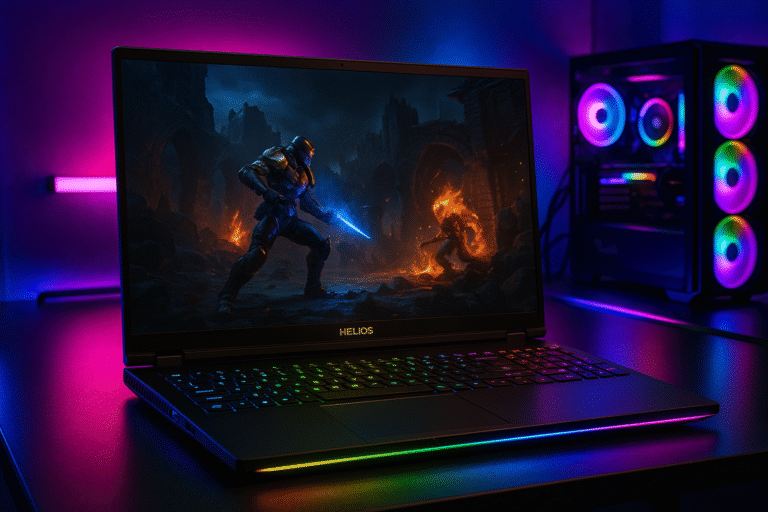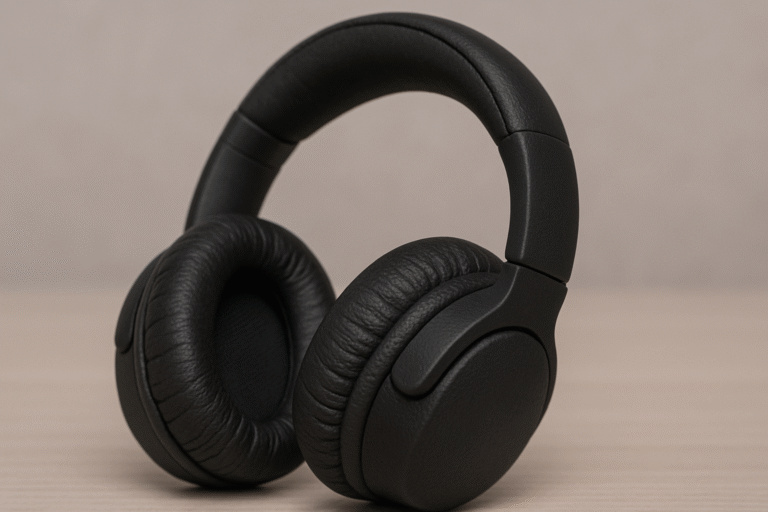Top 7 Smart Home Devices That Make Life Easier in 2025 Discover
Introduction
In 2025, smart home devices continue to revolutionize the way we live, making our homes more convenient, efficient, and secure. Among the most accessible options for transforming your space into a smart home are smart plugs and power strips. These simple yet powerful devices allow you to control your appliances remotely, automate routines, and save energy—all from the palm of your hand. In this post, we’ll explore how smart plugs and power strips can enhance your daily life and help you make the most of your smart home setup.
Smart Speakers (e.g., Amazon Echo, Google Nest Audio)
Smart speakers are the heart of any modern smart home. These voice-activated devices are more than just Bluetooth speakers—they’re personal assistants that help manage your day, control smart devices, and provide entertainment, all hands-free.
What makes smart speakers essential for any smart home is their ability to serve as a hub for other connected devices. With a simple voice command, you can dim the lights, adjust the thermostat, lock the doors, or even start your robotic vacuum—hands-free. This seamless integration is what turns a home into a truly smart home experience.
In 2025, smart speakers have become even more advanced. Many now include enhanced audio quality, faster voice recognition, and smarter AI that learns your preferences over time. Some models also feature built-in displays for video calls, recipe instructions, or real-time camera feeds.
What Are Smart Speakers?
Smart speakers are wireless speakers integrated with virtual assistants like Amazon Alexa, Google Assistant, or Apple Siri. They respond to voice commands, offering a wide range of functions including playing music, setting alarms, controlling smart home devices, checking the weather, and answering questions.
Types of Smart Speakers
- Standard Smart Speakers:
These include compact devices like the Amazon Echo Dot or Google Nest Mini. They’re small, affordable, and perfect for voice commands, but have limited audio power. - Premium Smart Speakers:
Devices like the Apple HomePod, Amazon Echo Studio, and Google Nest Audio fall in this category. They offer high-quality sound, deeper bass, and are ideal for music lovers. - Smart Displays:
These are smart speakers with built-in screens, like the Echo Show or Google Nest Hub. They allow for video calls, recipe walkthroughs, and visual control of smart home devices.
Key Differences Between Brands
- Amazon Alexa: Works well with a wide range of third-party devices and has a large skill library. Ideal for those heavily invested in the Amazon ecosystem.
- Google Assistant: Offers better answers for general questions and integrates seamlessly with Google services.
- Apple Siri (HomePod): Best for users in the Apple ecosystem, though with fewer third-party integrations.
Why Smart Speakers Matter in a Smart Home
What makes smart speakers essential is their role as a smart home hub. They connect with other smart devices like lights, thermostats, locks, and cameras, allowing voice control for the entire home. This centralized control saves time, boosts convenience, and enhances accessibility—especially for seniors or people with mobility issues.

Final Thoughts
In 2025, smart speakers have evolved into powerful, AI-driven tools that personalize your daily routine. Whether you’re starting your smart home journey or expanding it, a smart speaker is the perfect foundation to build on.
Smart Thermostats (e.g., Nest Learning Thermostat, Eco bee Smart Thermostat)
Smart thermostats are essential components of a Smart Home, offering enhanced comfort, energy efficiency, and convenience. These devices automatically adjust your home’s temperature based on your preferences and behaviors, ensuring a comfortable living space while saving energy.
Key Features of Smart Thermostats
- Learning Capabilities: Many smart thermostats, such as the Nest Learning Thermostat, can learn your temperature preferences and daily routines. Over time, they adjust the heating and cooling based on your lifestyle, ensuring you don’t waste energy when you’re away from home.
- Remote Control: Smart thermostats allow you to control your home’s temperature from anywhere using your smartphone. This feature is incredibly useful when you want to adjust the temperature before you arrive home or if you forgot to turn it off before leaving.
- Energy Savings: Smart thermostats can significantly reduce your energy bills. By learning when to heat or cool your home and when to let the temperature naturally adjust, these devices help optimize your HVAC system, preventing unnecessary energy consumption.
- Integration with Other Smart Devices: Many smart thermostats integrate seamlessly with other Smart Home devices, such as smart speakers and home security systems. For instance, you can adjust the thermostat with voice commands through Amazon Alexa or Google Assistant.
Types of Smart Thermostats
- Learning Thermostats: These are highly intelligent devices that adapt to your behavior. The Nest Learning Thermostat is a prime example, capable of learning your schedule and adjusting temperature automatically.
- Programmable Thermostats: While not as advanced as learning models, programmable smart thermostats allow you to set schedules for heating and cooling, ensuring energy efficiency even when you’re not around.
- Wi-Fi Thermostats: These thermostats connect to your home Wi-Fi network and can be controlled remotely through apps, offering flexibility and control from anywhere.

Why Choose a Smart Thermostat?
In 2025, Smart Home devices are becoming more sophisticated, and smart thermostats are at the forefront of this evolution. With improved AI capabilities, these thermostats can anticipate your needs and make real-time adjustments based on environmental factors, helping you stay comfortable while minimizing your carbon footprint. They also integrate with other Smart Home devices, providing you with complete control over your home’s environment
Smart Lighting (e.g., Philips Hue, LIFX)
Smart lighting is one of the most popular and versatile smart home devices. It allows you to control your home’s lighting with ease, whether through voice commands, an app, or automation. As part of a smart home system, smart lighting offers enhanced convenience, energy efficiency, and even the ability to set moods or improve security.
Types of Smart Lighting
- Smart Bulbs: These are the most common and easiest way to upgrade your lighting. Smart bulbs can be controlled via apps or voice assistants like Alexa or Google Assistant. Popular brands like Philips Hue and LIFX offer bulbs that change colors, adjust brightness, and integrate with other smart devices.
- Smart Light Strips: Smart light strips are flexible strips that can be placed under cabinets, along walls, or around furniture to create ambient lighting. They offer the same features as smart bulbs but are more versatile in terms of placement.
- Smart Ceiling Lights: These lights are designed to replace traditional ceiling fixtures. With advanced features like dimming and color-changing options, they can help customize the lighting for any room in your house.
- Smart Outdoor Lights: These are specially designed for use outside your home and often come with features like weatherproofing, motion detection, and adjustable brightness. They can increase security and add ambiance to your garden or porch.

Benefits of Smart Lighting
- Convenience: The ability to control your lights remotely through apps or voice commands makes adjusting your home lighting easy and hassle-free.
- Energy Savings: Smart lights often use energy-efficient LED technology, and many offer features like scheduling, which ensures that lights are only on when needed.
- Security: Some smart lights come with motion sensors or can be set to simulate activity when you’re away, giving your home a lived-in appearance.
Smart Lighting and Automation
In a smart home ecosystem, smart lighting works even better when automated. You can set up routines that turn your lights on at specific times or when you come home. Integration with other smart devices allows for added functionality, such as dimming your lights when you start a movie, or syncing lights with music for a more immersive experience.
Additional Information
With 2025 bringing more AI-powered devices, smart lighting is becoming even smarter. New models can adjust automatically based on your circadian rhythm, helping to promote better sleep and wake cycles. Some lights also integrate with home health and wellness apps, adjusting to your preferences for lighting that suits your mood or activity.
Smart Security Cameras (e.g., Ring, Arlo)
In the modern smart home, security is a top priority, and smart security cameras are one of the most effective ways to monitor and protect your home. These cameras provide a reliable solution to keep an eye on your property, whether you’re at home or away.
Types of Smart Security Cameras
There are several types of smart security cameras to choose from, each offering unique features. Here are the main types:
- Indoor Cameras: Designed for monitoring the interior of your home. These cameras help you keep track of pets, children, or any suspicious activity indoors.
- Outdoor Cameras: Built to withstand harsh weather conditions, outdoor cameras are perfect for securing your property’s perimeter. They offer wide-angle lenses and features like night vision and motion detection.
- Doorbell Cameras: A combination of a camera and a doorbell, these devices allow you to see and speak to visitors remotely. Popular models like Ring integrate with other smart home devices for an enhanced security system.
- PTZ (Pan-Tilt-Zoom) Cameras: Offering remote control to pan, tilt, and zoom, PTZ cameras are ideal for larger properties that require more extensive surveillance coverage.
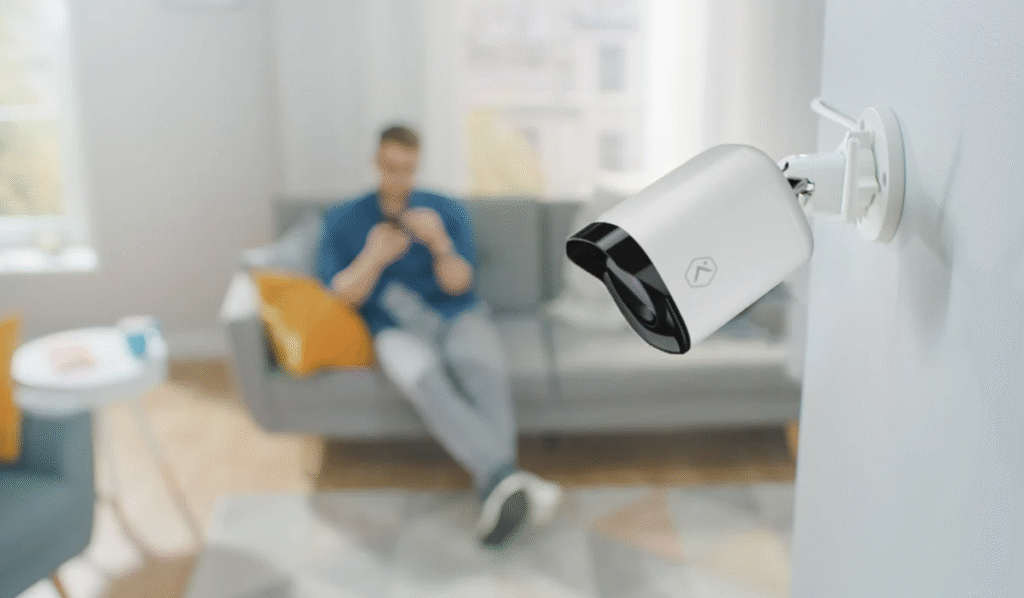
Benefits of Smart Security Cameras
- Remote Monitoring: One of the key advantages of smart security cameras is the ability to access live feeds from anywhere via your smartphone or computer. Whether you’re on vacation or at work, you can always check in on your home.
- Motion Detection & Alerts: Smart cameras come with motion sensors that send real-time alerts to your phone, letting you know if there’s unusual activity around your home.
- Integration with Other Devices: Many smart security cameras seamlessly integrate with other smart home devices like smart lights and smart locks. For instance, you can set up a camera to trigger lights to turn on when motion is detected.
- Cloud Storage: Most models offer cloud storage for recorded footage, making it easy to access past videos and keep an eye on long-term trends or patterns.
Additional Considerations
When choosing a smart security camera, it’s important to consider factors like video quality, storage options, and compatibility with your existing smart home system. Look for models with high-definition video, a wide field of view, and solid integration with smart hubs.
Smart Locks (e.g., August Wi-Fi Smart Lock, Schlage Encode)
Smart locks are one of the most important innovations in the world of smart home devices. They provide an advanced level of security and convenience, making it easier than ever to control access to your home. Whether you’re coming home with a handful of groceries or need to grant access to a guest or service provider, smart locks offer a seamless and secure solution.
What Are Smart Locks?
Smart locks are electronic door locks that can be controlled remotely using a smartphone, voice assistant, or keyless entry system. They replace traditional lock-and-key systems with more advanced features, enhancing both security and convenience.
Types of Smart Locks
- Keypad Locks: These locks use a numerical code to unlock the door. They are easy to install and perfect for families or those who often forget their keys. Users can create custom codes for different people or guests.
- Wi-Fi Smart Locks: Wi-Fi-enabled locks like the August Wi-Fi Smart Lock connect directly to your home’s Wi-Fi network. This allows you to control and monitor the lock remotely from anywhere using an app.
- Bluetooth Smart Locks: Bluetooth-enabled locks offer proximity-based entry. They unlock automatically when your smartphone comes within range. These are ideal for those who don’t want to carry a key or fumble for their phone.
- Biometric Locks: These locks use fingerprint recognition or other biometric data for access. They provide high security and are great for homes or offices that need strict access control.
- Z-Wave/ Zigbee Smart Locks: These work with smart hubs like SmartThings or Alexa. They rely on Z-Wave or Zigbee communication protocols to connect with other smart devices in your home, allowing for integrated automation.
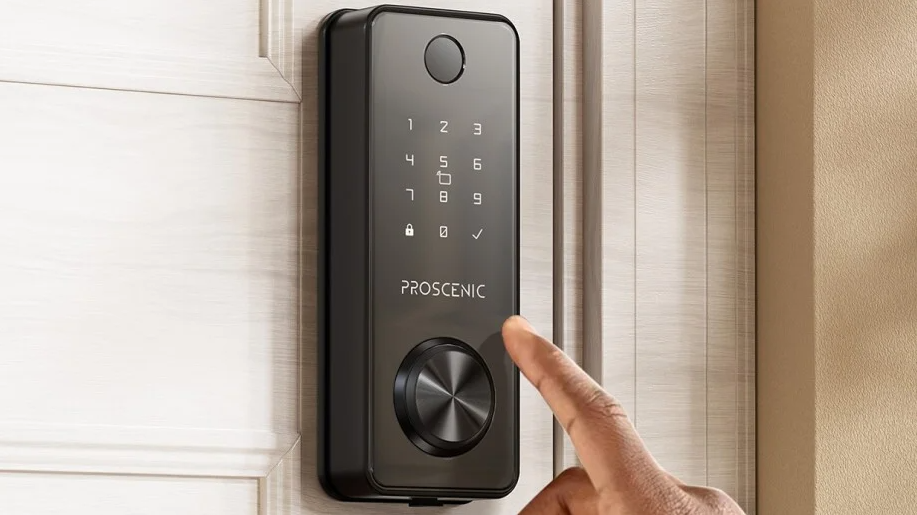
Benefits of Smart Locks
- Increased Security: Unlike traditional locks, smart locks allow you to monitor who enters your home in real time. Many smart locks have built-in alarms that alert you if an unauthorized person tries to tamper with the lock.
- Convenience: No more fumbling for keys. You can unlock your door with a smartphone, a voice command, or a code.
- Remote Control: You can lock or unlock your doors from anywhere in the world using your phone. This is especially helpful if you need to let in guests or family members while you’re away.
- Customizable Access: Set temporary or permanent access codes for friends, family, or service providers.
Smart locks are a smart home essential for those looking to increase security and improve convenience. Whether you want to monitor entry, grant access remotely, or simply say goodbye to keys, smart locks offer the perfect solution for modern homes. With a wide variety of options available, you can choose the lock that best suits your needs and preferences.
Smart Kitchen Appliances (e.g., Samsung Smart Fridge, Instant Pot Smart Wi-Fi)
Smart kitchen appliances are transforming the way we prepare meals and manage our kitchens, making them more efficient and convenient. These devices are a key component of the smart home ecosystem, offering everything from remote control to enhanced automation and energy efficiency. In 2025, smart kitchen appliances are designed to save time, improve cooking results, and even reduce your carbon footprint.
Types of Smart Kitchen Appliances
- Smart Refrigerators: Modern smart fridges, like the Samsung Family Hub, feature Wi-Fi connectivity, touchscreen interfaces, and even internal cameras. You can view the contents of your fridge remotely, track expiration dates, and create grocery lists from the comfort of your smartphone. Some models also offer voice control, allowing you to adjust settings or find recipes hands-free.
- Smart Ovens and Ranges: Smart ovens such as those from June Oven or KitchenAid can be controlled remotely. These ovens come with pre-set cooking functions, adaptive cooking algorithms, and even live video feeds of the cooking process. You can start cooking remotely, adjust temperatures, and ensure your meal is perfectly cooked while you’re away.
- Smart Cookers: Devices like the Instant Pot Smart Wi-Fi allow you to cook meals quickly and efficiently while controlling the cooking process remotely through a smartphone app. These cookers feature multiple cooking presets and are perfect for busy families or anyone looking to save time without sacrificing flavor.
- Smart Coffee Makers: If you’re a coffee lover, a smart coffee maker is an essential kitchen addition. With Wi-Fi or Bluetooth connectivity, you can schedule brewing times, adjust strength, and even order supplies through your device. Brands like Nespresso and Smarter Coffee provide customizable brewing options for the perfect cup every time.
- Smart Dishwashers: Many modern dishwashers, such as those from Bosch or Whirlpool, offer smart home integration, allowing you to monitor and control the washing cycle remotely. These dishwashers come with energy-saving features, such as sensors that adjust the washing process based on load size and dirt level.
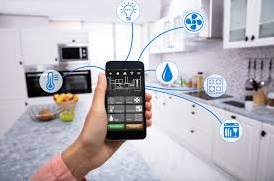
Benefits of Smart Kitchen Appliances
- Convenience: Control your kitchen appliances from anywhere, making meal prep and cleanup easier.
- Energy Efficiency: Many smart kitchen appliances have eco-friendly features like energy usage monitoring and optimization.
- Time-saving: Cook meals faster with smart cookers, ovens, and slow cookers that offer precise control and automation.
- Improved Cooking: These appliances help you cook meals with greater consistency and less guesswork, ensuring perfect results every time.
Smart kitchen appliances are becoming a must-have in the smart home setup, offering convenience, efficiency, and smarter ways to manage your meals. Whether you’re upgrading your fridge or investing in a smart oven, these devices are designed to enhance your kitchen experience while contributing to a smarter, more energy-efficient home.
Smart Plugs and Power Strips (e.g., TP-Link Kasa Smart Plug, Amazon Smart Plug)
Smart plugs and power strips are among the easiest and most affordable ways to upgrade your home into a smart home. These devices turn any regular appliance or electronic into a smart device by allowing you to control them remotely through your smartphone, tablet, or even voice commands via smart assistants like Alexa or Google Assistant.
What Are Smart Plugs and Power Strips?
A smart plug is a small, portable device that fits between your appliance and the wall socket, enabling you to turn the device on or off remotely. A smart power strip functions similarly but offers multiple outlets, allowing you to control multiple devices at once.
Types of Smart Plugs and Power Strips
- Wi-Fi Smart Plugs: These connect directly to your home Wi-Fi network and allow remote control from anywhere via an app.
- Bluetooth Smart Plugs: Bluetooth plugs offer more limited range but are a good choice for controlling devices within close proximity (i.e., within the same room).
- Smart Power Strips: These strips provide several outlets, each individually controllable. They are perfect for controlling multiple devices like lamps, fans, or entertainment systems from one app.
Key Features and Benefits of Smart Plugs and Power Strips
- Remote Control: You can turn your appliances on or off from anywhere, ensuring that devices like lights, fans, and coffee machines are only powered when needed.
- Energy Monitoring: Many smart plugs and power strips have energy monitoring features, allowing you to track power usage and reduce unnecessary energy consumption.
- Automation: Set schedules or timers for your appliances. For example, you can set your coffee machine to start brewing every morning at 7 AM or program lamps to turn off when you’re away to enhance security.
- Voice Control: Integration with smart assistants like Amazon Alexa or Google Assistant means you can control your devices using just your voice.
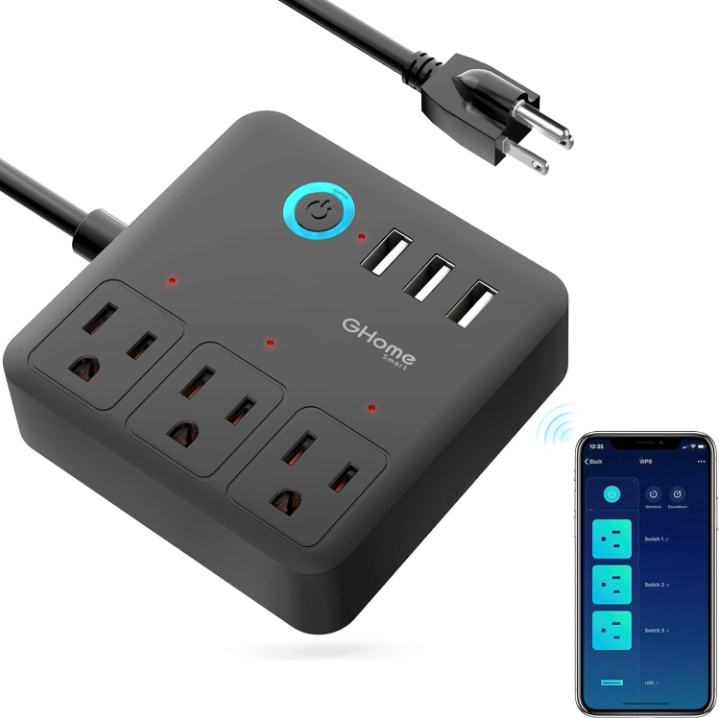
How Smart Plugs Enhance Your Smart Home
In a smart home setup, smart plugs and power strips are integral for making your life more convenient and energy-efficient. By simply plugging in your existing devices, you can extend their functionality to match the modern, automated lifestyle.
Where to Use Smart Plugs?
Smart plugs are versatile and can be used in various areas of your home, such as:
- Living Room: Control lamps, fans, and entertainment systems with ease.
- Kitchen: Program coffee makers, slow cookers, or refrigerators to run at specific times.
- Bedroom: Turn off lights or other electronics automatically while you sleep.
Conclusion
As we move further into 2025, the importance of smart home technology continues to grow, making our lives more convenient, efficient, and secure. From smart speakers and thermostats to advanced security cameras and lighting systems, there’s no shortage of innovative devices that can transform your living space.
Among the most accessible and impactful devices are smart plugs and power strips. These devices are an easy entry point for anyone looking to upgrade their home into a smart home without the need for expensive, complex installations. With the ability to control appliances remotely, save energy, and enhance home automation, smart plugs and power strips are an excellent choice for adding convenience and control to your daily routine.
Whether you’re looking to automate your coffee maker, control lights remotely, or track your energy consumption, these devices can fit seamlessly into your life. They offer a cost-effective way to integrate smart home technology into your home, enhancing comfort and efficiency while saving time and money.
By investing in smart home devices like smart plugs and power strips, you’re taking a step towards a more connected and intelligent home in 2025. Start small and gradually build your smart home ecosystem to enjoy the benefits of modern living at its best.
Related Links
If you’re interested in exploring more smart home technologies or finding budget-friendly options, here are some related posts and resources:
Internal Links:
- Best Tablets for Students – 2025 Reviews: Top Picks for Every Budget
- Top wireless earbuds with long battery life in 2025 Amazing
- Best laptops for students great opportunity in 2025
- Best Budget Smartphones Under $300-2025 Guide
- Affordable smartwatches under $100
External Links:
if you need further explanation contact us
read more posts by blog page


